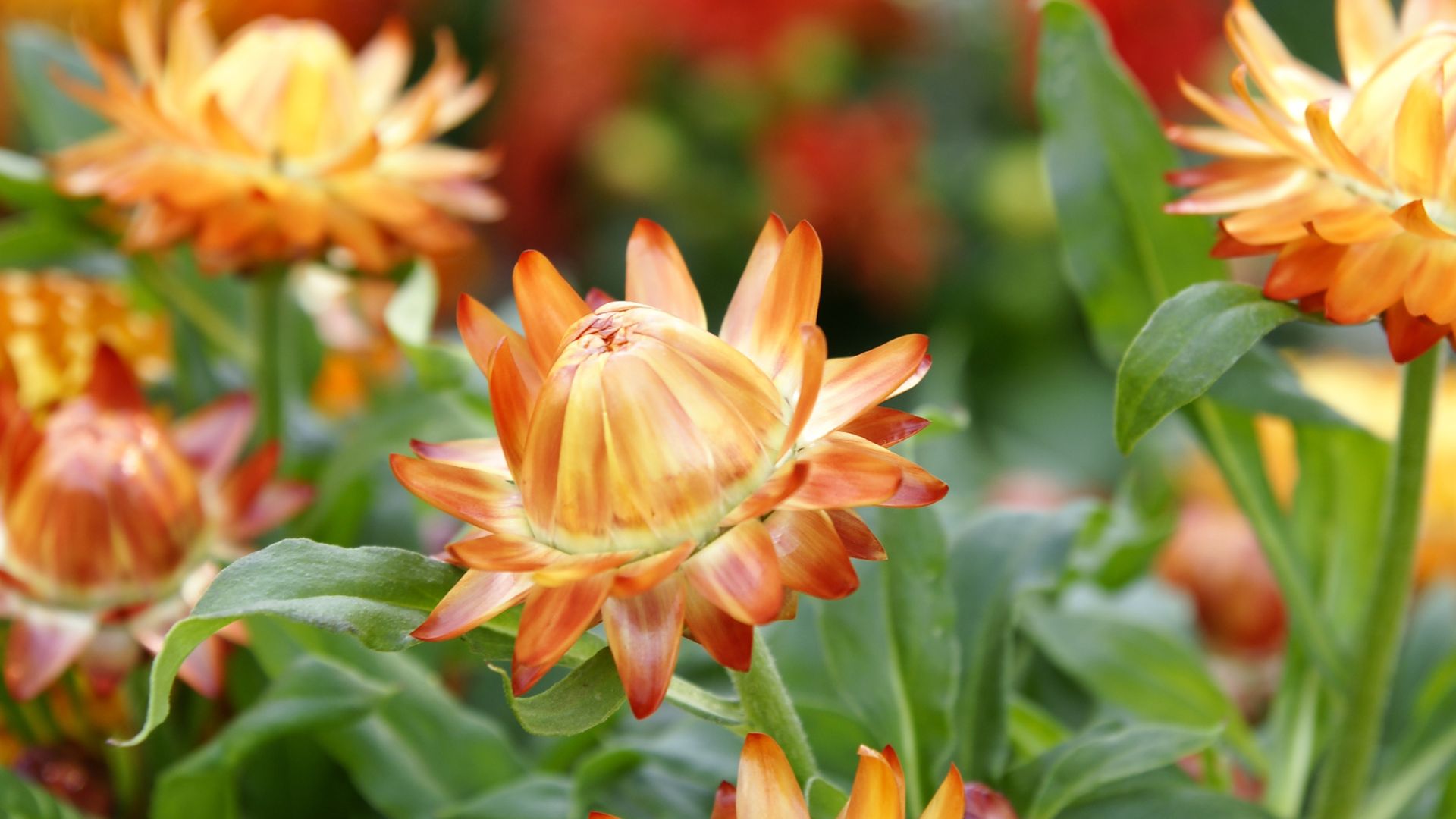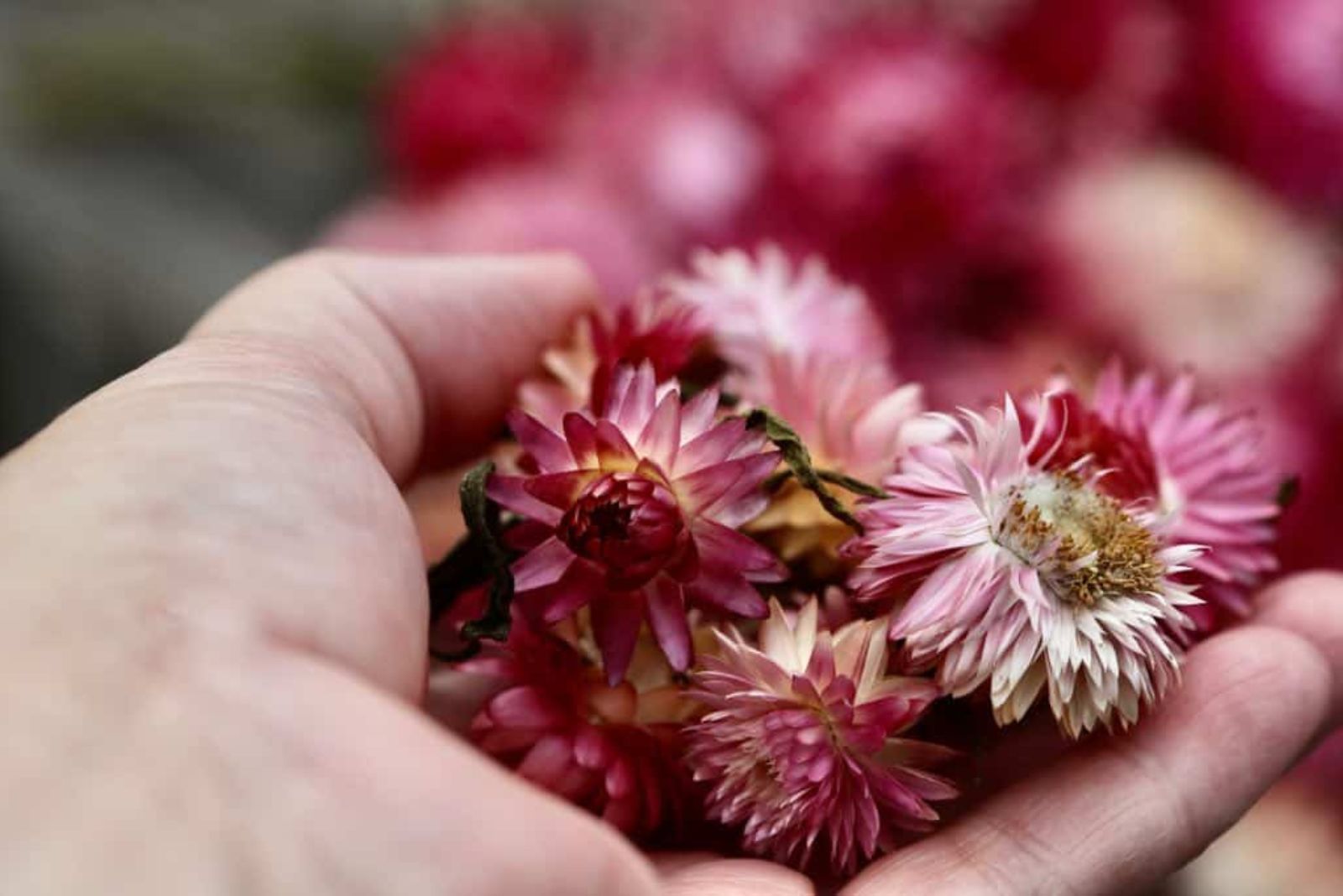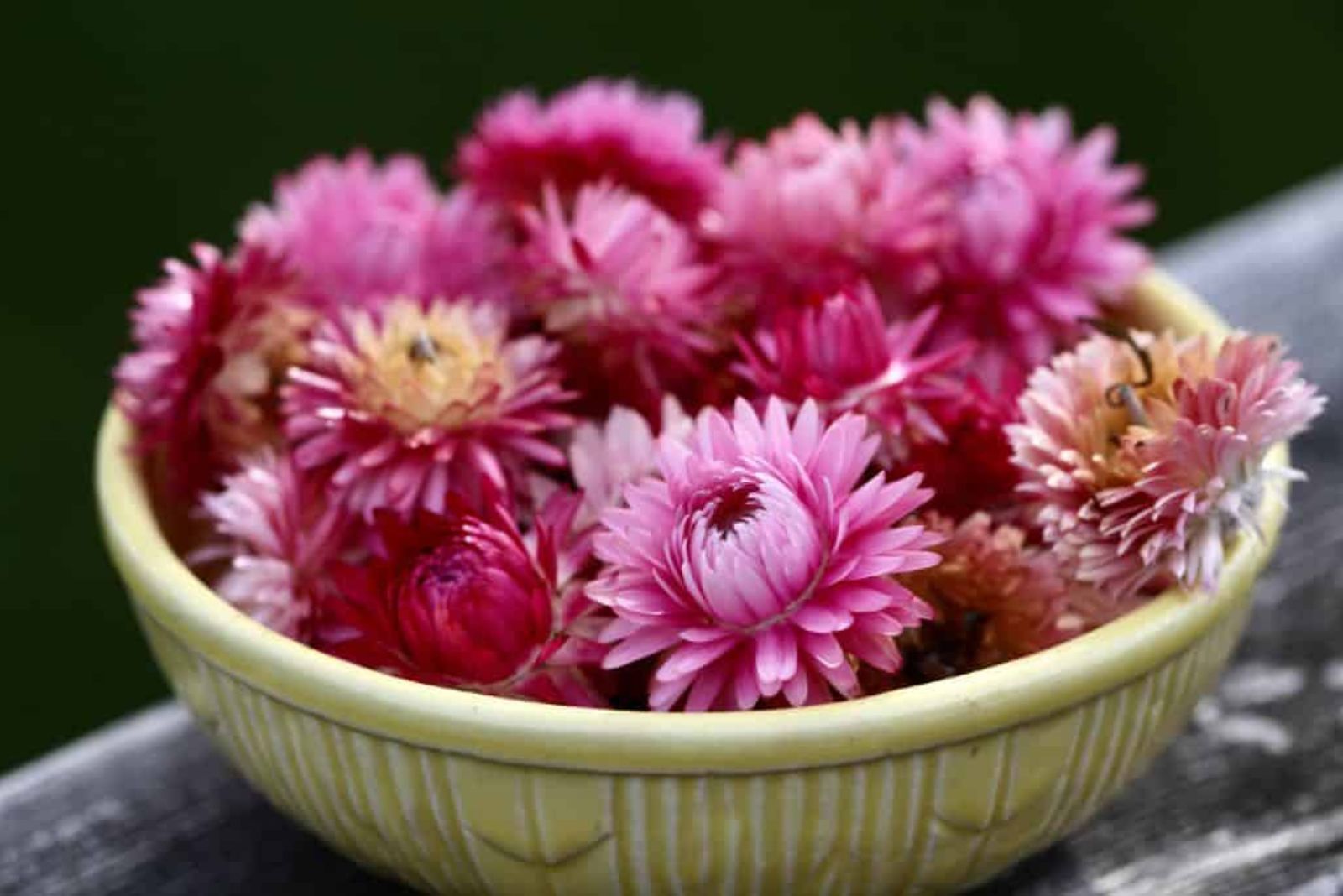Preserving the beauty of your vibrant strawflowers for the long haul is a delightful way to enjoy their colorful blooms year-round. These everlasting blossoms can grace your home, floral arrangements, and crafts even long after they’ve been plucked from the garden.
Now is the perfect time to use them and make autumnal wreaths and mantelpiece garlands!
Join us as we explore the step-by-step process of drying strawflowers and discover creative ways to incorporate them into your decor and crafts.
1. Find The Ideal Location
The first thing you should do when you cut your strawflowers is remove some of the lower leaves and let the stem dry out quicker. You can still leave some of the foliage on top since they will obtain a curvy shape once dry.
What you should do next is sort them into little bundles of five to ten stems each; then, use string or garden twine to firmly knot them together at the base. These should be hung in a relatively dark and dry place.
Hang your strawflowers from a beam. If you have an empty clothes dryer, you can use it for drying your flowers. Avoid placing them close to the wall as there’s no proper airflow, so they might get brown and moldy.
After successfully hanging them up, wait about three weeks so that they can fully dry out.
You might also like: Here’s How To Easily Dry Your Homegrown Herbs With One Laundry Room Essential
2. Proper Air Flow Is Required
When drying strawflowers, it’s crucial to provide adequate air circulation. Hang them upside down in a well-ventilated, dry area. If you don’t have a window in that room, you can always run a fan for a few hours to circulate the air.
Good airflow helps prevent mold and mildew while promoting even drying. Avoid overcrowding the flowers, as this can impede airflow and lead to uneven drying.
3. Humidity Must Be Low
Low humidity is essential for successful strawflower drying. High humidity can cause the petals to become limp and may encourage mold growth. Choose a dry location, preferably with a humidity level below 60%.
A dry basement or large airing cupboard might work just fine. However, if you live in a humid climate, consider using a dehumidifier in the drying area.
You might also like: Do Succulents Like Humidity? It’s Time To Find Out
4. The Trick is To Wire Them
One effective method for drying strawflowers is to use floral wire or twist ties. Wiring helps prevent the flower heads from drooping or bending during the drying process because they are not as brittle as strawflower stems.
It also makes them easier to add into flower arrangements or bouquets (generally leads to less breakage).
You can find 22 or 24 gauge floral wire on Amazon for cheap prices. Remove the stems from the flowers and then cut the wire about 25 inches long. Fold this piece in half so that a small loop forms at one end.
Then, feed the wire’s two open ends through the strawflower’s head from top to bottom by pinching them together. Pull the wire through the head slowly, stopping when the loop is hidden.
Avoid pulling the wire straight through the strawflower’s head to avoid getting a useless strawflower. Remember to do this while the blooms are still fresh; otherwise, the strawflower heads will be too fragile to work with.
I would suggest you put strawflower stems or any broken heads in a paper bag or box, and then spread them down the length of your table.
You can get creative and make some charming decorations, and you can use glue to create dried flower tags that you can attach to brown shipping labels.
This video might be helpful:
5. Store Them Properly
Once your strawflowers are completely dry, it’s essential to store them correctly to maintain their beauty. Place them in an airtight container or a sealable plastic bag to protect them from moisture and dust.
Store them in a cool, dark place to prevent fading due to light exposure. With proper storage, your dried strawflowers can last for an extended period.
You might also like: 25 Charming French Flowers And Their Meanings



